Elcom
Consumer goods
Elcom supports manufacturers in the consumer goods and packaging sector who need to plan a rapid transformation. This transformation is fueled by increased competition that demands both improved productivity while maintaining high quality standards, as well as increasing consideration of product flexibility and individualization.
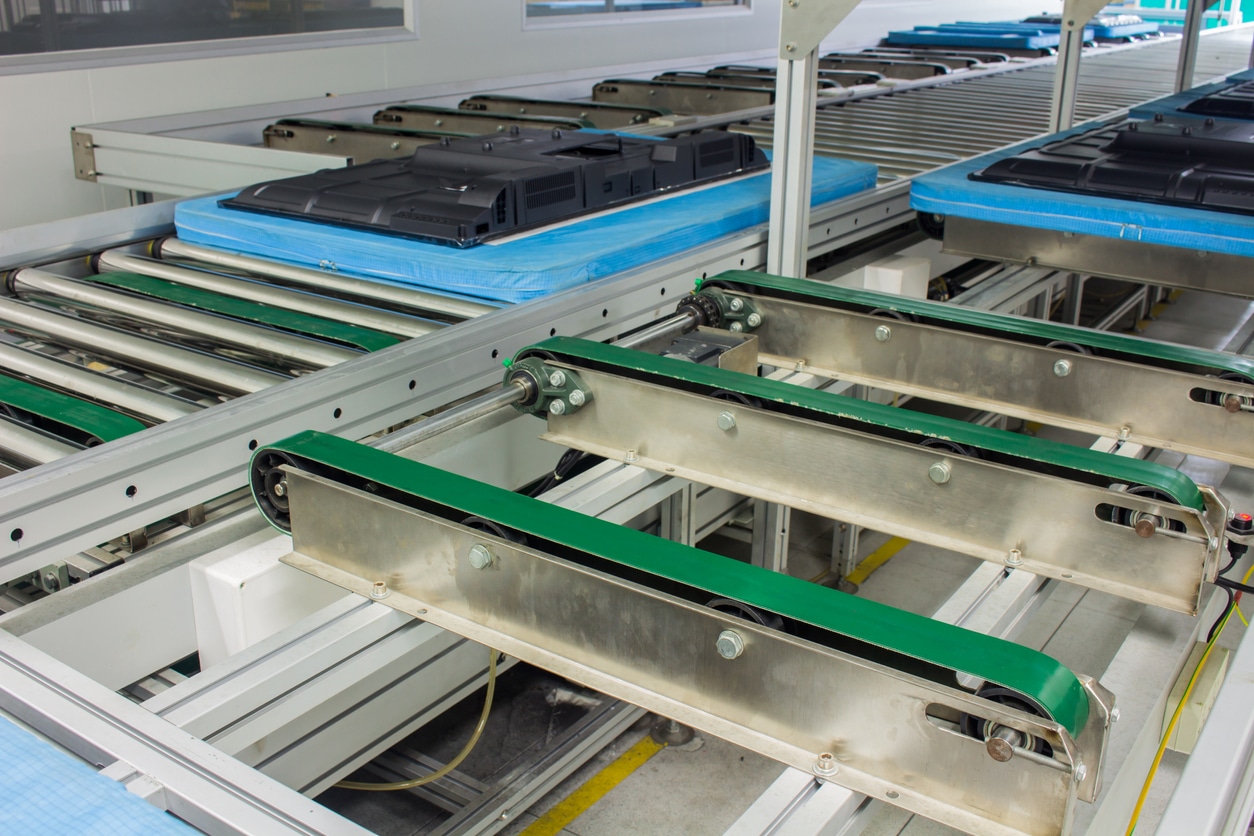
It is imperative to keep pace with market changes, while considering challenges such as staff shortages, energy costs and component delivery times. The need to promote sustainable production to preserve resources and reduce carbon footprint is also crucial for the future. To meet these challenges, Elcom considers it essential to adopt new integrated concepts in equipment, production processes and packaging, all driven by automation. The key lies in increasing the level of automation across the entire value chain to remain competitive and respond to changing market needs.
What equipment is used in these industries?
The world’s largest consumer goods companies turn to elcom to improve the efficiency and flexibility of their production lines.
Our packaging industry experts oversee facilities across the globe, covering all consumer goods segments. They have extensive experience to support you towards the success of your projects. No matter the nature of your products, whether they are health, beauty, household, textiles or personal care products, our innovative technology and in-depth expertise will help you stand out from your competitors.
Elcom’s modular belt solutions offer rectilinear options and curvature radii to ensure product stability and successfully overcome the challenges of the conversion area. Elcom also offers solutions suitable for large products, cantilever configurations and much more.
When it comes to industrial conveyors for transporting industrial goods, there are a variety of equipment tailored depending on the specific needs of the industry and the type of products to be handled. Here are some of the commonly used equipment:
Belt conveyors
These conveyors use a rubber, PVC, or metal conveyor belt to move products. They are widely used in many industries due to their versatility. They can transport components, semi-finished assemblies, and fully assembled (television, washing machine, coffee machine, iron, etc.)
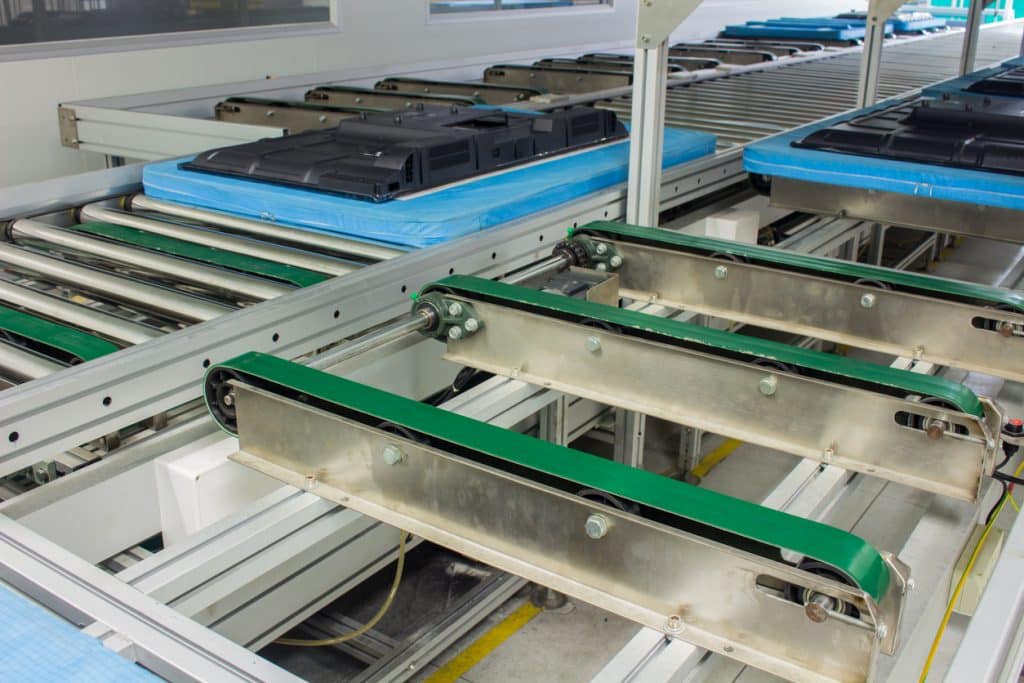
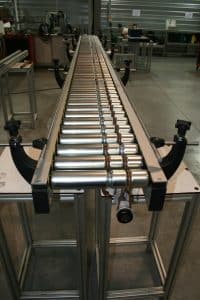
Roller conveyors :
These conveyors are equipped with series of rollers that support the products and move them forward. They are suitable for items of various shapes.
Chain conveyors :
Chain conveyors developed by Faber use steel or plastic chains to transport products.
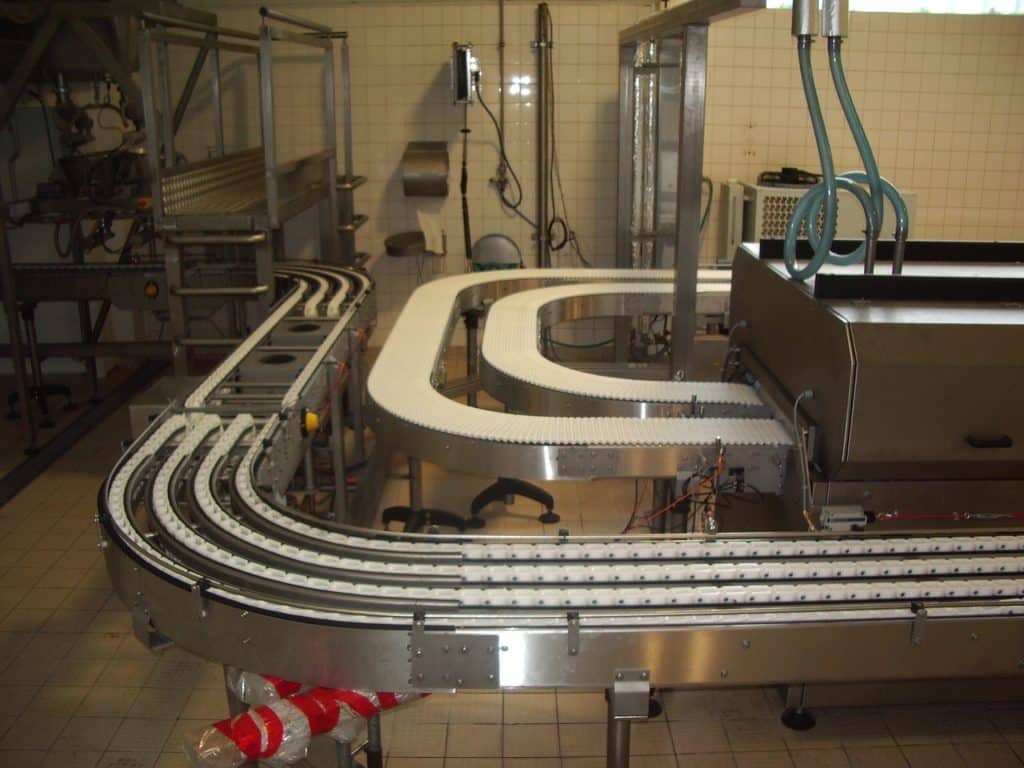
Case study
Project :
Need to automatically feed supply boxes of 2 different heights taking into account ergonomics. The conveyors must be compact because they must pass underneath a TLM modular linear transfer line.
The assembly stations are on the TLM transfer line, the operators are seated facing their stations. The conveyors called “STEFF” (first name of our technical sales representative Stéphanie who led the project) are positioned so that the parts supply crates are at their levels to their right or left in order to recover the parts to be climb up then evacuate the box when it is empty
Solutions:
Composition of the machine:
The “Crate Supply Conveyor” machine is made up of several parts mechanically assembled with each other for the purpose of transporting GALIA type plastic crates.
The machine is broken down into 4 sub-assemblies:
– The loading conveyor (in the upper part)
– A 4-position elevator
– A body tilter
– The unloading conveyor (in the lower part)
Loading conveyor
Conveyor Overview
The loading conveyor is of the motorized roller type. It is designed to transport boxes of the following dimensions:
600x400x310mm
600x400x210mm
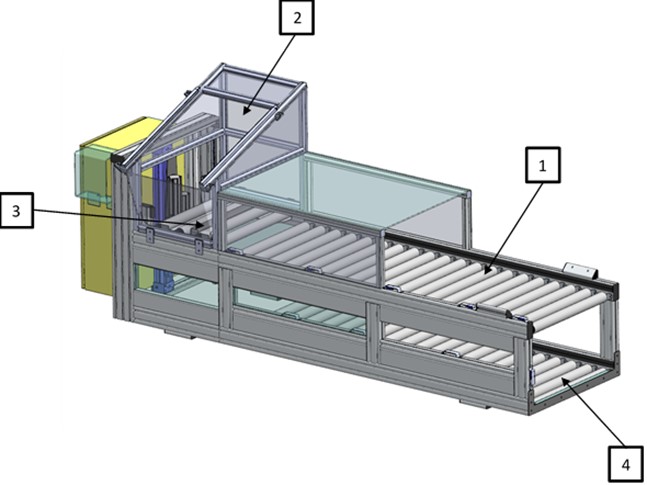
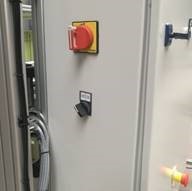
A selector placed on the side of the electrical cabinet allows you to choose the size of the boxes used on the conveyor.
It is made up of 4 zones, each equipped with a Ø50mm motor roller, controlled by an electronic card.
The speed is variable (by selector on each card in each zone) from 5 to 15 m/min.
The boxes must be placed at the front of the loading conveyor (see sketch). If the previous zone is free, the crate advances automatically. This operating principle is valid until the last zone, before the elevator.
It is possible to load up to 4 boxes on the conveyor.
The elevator (4 positions)
The elevator consists of a motorized roller conveyor, mounted on a mobile cart, in order to present the boxes to the operator. If the elevator is empty and a case from the loading conveyor arrives in the area before the elevator, the elevator positions itself at the loading conveyor.
The box is loaded on the elevator.
Depending on the type of box selected, the elevator raises the box to the working position (the top of the box is always at the same height for both types of boxes).
An electrical cabinet equipped with a PLC allows the operation of the elevator to be managed.
The elevator is equipped with a light curtain at the top. If the beam is cut, the elevator movements are blocked. The “reset” indicator light on the control box is activated.
It is necessary to reset to authorize elevator movements again.
The light curtain is disabled when the elevator is in the up position and the tilt activated.
The elevator housing can be mounted in two positions, allowing the operator to have the boxes on their left or right
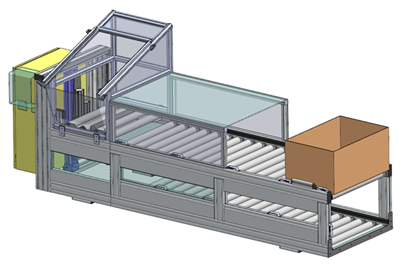
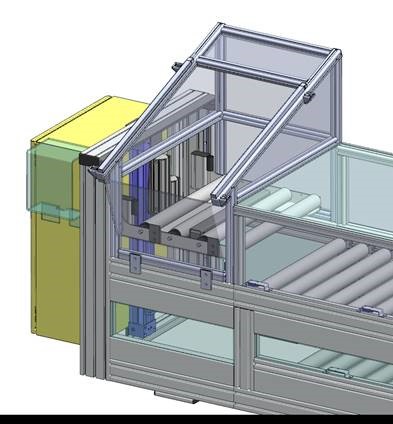
The tilter
The body tilter is a pneumatic system which allows the body to be tilted by approximately 20° to make it easier to pick up parts. The tilter can be mounted on the left or right, to allow the operator to have the boxes on their left or right.
The unloading conveyor
The unloading conveyor is of the motorized roller type. It is designed to transport boxes of the following dimensions:
600x400x310mm
600x400x210mm
It is made up of 4 zones, each equipped with a Ø50mm motor roller, controlled by an electronic card.
The speed is variable (by selector on each card in each zone) from 5 to 15 m/min.
When a crate is empty, the operator presses the “EMPTY CASH” button on the control box.
The cycle is started to evacuate the empty box onto the unloading conveyor, in the lower part.
If the previous zone is free, the crate advances automatically. This operating principle is valid until the last zone. Up to 4 boxes can be unloaded onto the loading conveyor
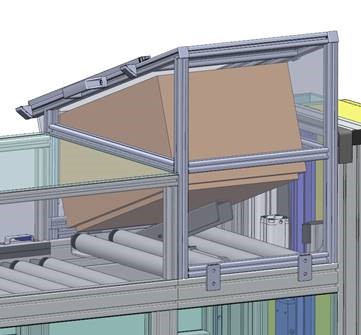
They trust us

Stäubli
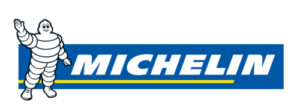
Michelin

Schneider Electric

Groupe SEB
One question ?
Our experts are here to answer your questions, support you, and guide you through all your projects.
